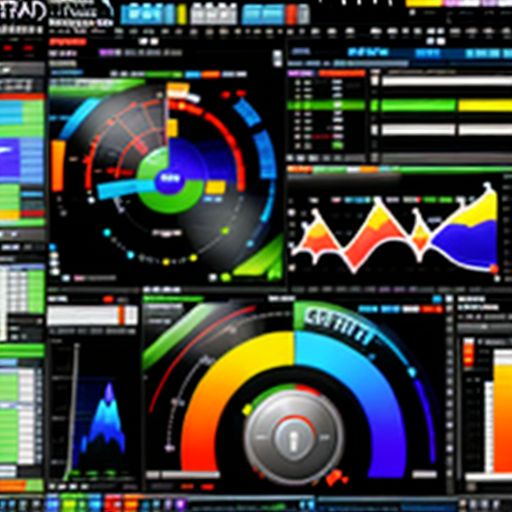Imagine this: a customer places a large order, eager to receive their products. But there’s a problem – your inventory system shows you’re out of stock on a crucial component. This scenario is a manufacturer’s worst nightmare, leading to delayed shipments, frustrated customers, and ultimately, lost revenue. The culprit? Inefficient inventory management.
This is where Manufacturing Inventory Management Software steps in as a game-changer. This powerful tool empowers manufacturers to gain complete visibility and control over their inventory, optimize stock levels, and streamline their entire supply chain.
What is Manufacturing Inventory Management Software?
Manufacturing inventory management software is a specialized software solution designed to help manufacturing businesses track and manage their inventory levels, raw materials, work-in-progress (WIP), and finished goods. It goes beyond basic inventory tracking by offering advanced features like:
- Real-time inventory tracking: Get instant updates on stock levels across multiple locations.
- Bill of Materials (BOM) management: Accurately track and manage all materials required for production.
- Demand forecasting: Predict future demand based on historical data and market trends.
- Production planning: Optimize production schedules to meet demand and minimize waste.
- Automated procurement: Automate the process of ordering materials and replenishing stock.
- Lot and serial number tracking: Ensure traceability and quality control throughout the supply chain.
Why is Manufacturing Inventory Management Software Crucial for Your Business?
Implementing a robust inventory management system is no longer a luxury but a necessity for modern manufacturers. Here’s why:
1. Reduced Costs and Increased Efficiency:
- Minimize carrying costs: Avoid overstocking and reduce storage expenses.
- Prevent stockouts: Ensure timely production and avoid lost sales due to inventory shortages.
- Optimize production runs: Plan efficient production schedules and reduce waste.
- Streamline order fulfillment: Process orders faster and improve delivery times.
2. Enhanced Visibility and Data-Driven Decision Making:
- Real-time insights: Gain a comprehensive view of inventory levels across all stages.
- Accurate forecasting: Make informed decisions based on data-driven demand predictions.
- Identify bottlenecks: Pinpoint areas for improvement and optimize inventory flow.
- Improved reporting: Generate detailed reports on inventory performance and key metrics.
3. Increased Customer Satisfaction:
- On-time deliveries: Meet customer expectations with consistent and timely order fulfillment.
- Improved order accuracy: Minimize errors in order picking and shipping.
- Enhanced product quality: Lot and serial number tracking ensures quality control and traceability.
FAQs About Manufacturing Inventory Management Software:
Q: What are the different types of manufacturing inventory management software?
A: There are two main types: on-premise (installed locally) and cloud-based (accessed via the internet).
Q: How do I choose the right manufacturing inventory management software for my business?
A: Consider factors like your business size, industry, budget, specific needs, and desired features.
Q: What is the average cost of manufacturing inventory management software?
A: Costs vary depending on factors like the number of users, features, and deployment model.
management.daohocthuat.com/wp-content/uploads/2024/07/manufacturing-inventory-management-software-66908e.jpg" alt="Manufacturing Inventory Management Dashboard" width="512" height="512">Manufacturing Inventory Management Dashboard
Exploring Key Features of Manufacturing Inventory Management Software:
1. Bill of Materials (BOM) Management:
The foundation of efficient manufacturing lies in accurate BOM management. A robust software solution allows you to:
- Create and manage detailed BOMs: Define all materials and sub-assemblies required for each product.
- Track material costs: Monitor material prices and calculate product costs accurately.
- Ensure material availability: Receive alerts for low stock items and automate replenishment.
2. Demand Forecasting and Planning:
Predicting future demand is crucial for optimizing inventory levels and production schedules. Advanced software solutions offer:
- Historical data analysis: Identify trends and seasonality patterns to predict future demand.
- Statistical forecasting models: Utilize sophisticated algorithms for more accurate predictions.
- What-if analysis: Simulate different scenarios to assess the impact on inventory and production.
3. Production Planning and Scheduling:
Efficient production planning is essential for meeting demand while minimizing costs and lead times. Look for software that enables:
- Capacity planning: Align production schedules with available resources and labor.
- Shop floor control: Track work-in-progress (WIP) and monitor production progress in real-time.
- Agile manufacturing: Adapt quickly to changes in demand or production disruptions.
Conclusion:
Investing in manufacturing inventory management software is a strategic move that can transform your business operations. By optimizing inventory levels, streamlining production, and gaining real-time visibility, you can reduce costs, increase efficiency, and ultimately, achieve sustainable growth.
Do you have any questions about manufacturing inventory management software? Share your thoughts in the comments below!





